I made more than 100 videos analyzing high-stakes plays, and one of the most frequent comments was, "This wouldn't work on low stakes." So today, we'll go after this. We'll look at Linus "LLinusLLove" Loeliger's play and then find out whether it's a play that you can also make at your stakes or not.
All right, King-six suited. Nice hand to have here. Let's see what happens with this hand. We get raised from the cutoff by "riggedeck," and here we can, of course, call or go for a three-bet as Linus does. Three-betting a polarized range is a very GTO thing to do. We expect nothing less from LLinusLLove.
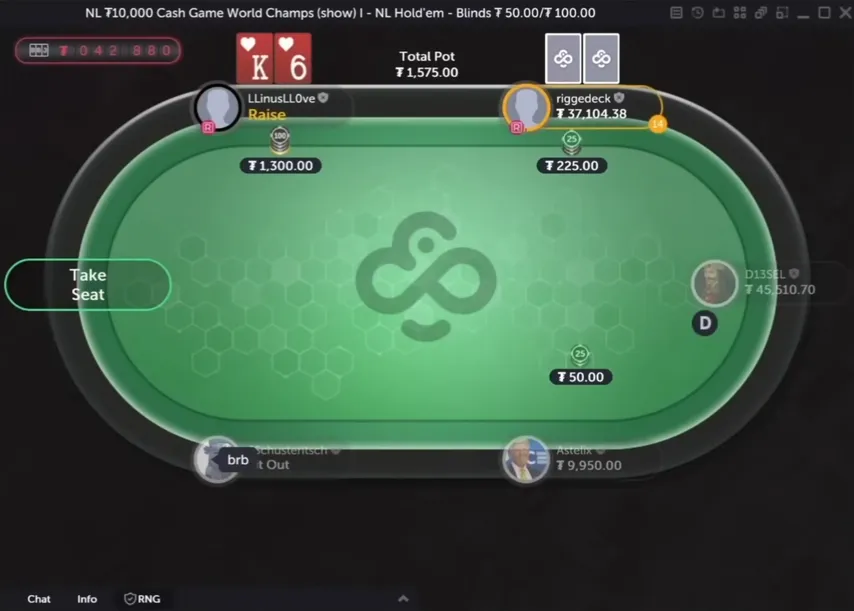
Here we already see one of the biggest differences between high-stakes GTO play and lower stakes: the big blind's three-betting tendency.
If you are playing against the big blind and expect them to three-bet, you can anticipate them using a much less polarized range than GTO would suggest. This means they are three-betting more linearly and depolarized. However, when you are in the big blind yourself, you actually do not want to be three-betting as polarized as GTO suggests either. This is simply because the average player on low stakes—and even mid-stakes—when playing in position and facing a three-bet from the big blind calls too often against the three-bet and doesn't four-bet enough compared to GTO.
Both of these tendencies incentivize us, as the big blind, to three-bet less polarized and more depolarized. A depolarized range includes all of the good hands, some of the best medium hands, and then just calls most of the weaker medium hands while folding all of the worst hands.
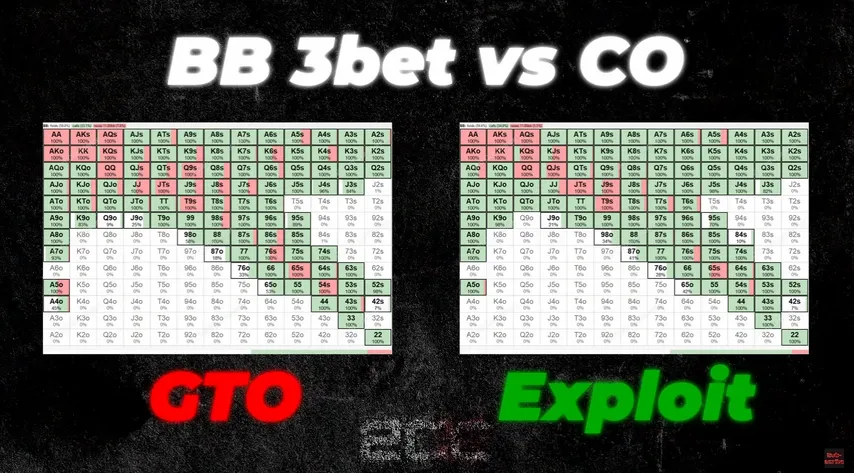
The advantage of this is that you're playing a much stronger three-betting range overall, which is beneficial if you're getting called more often than you should. It is also advantageous when you're not getting four-bet as often because against a four-bet, you'd have to fold many better medium hands. If that doesn't happen frequently, you can realize equity with those hands more often than you should—something that would not be the case in GTO. Therefore, in GTO it would be preferred to three-bet polarized.
Let's see what happens after that. We get called, and we flop a ten-high rainbow board ( ). Here we do expect to make a c-bet quite often since we still have quite an advantage as the three-bettor. Many of our overpairs are in very good shape here, so I expect him to c-bet quite frequently. Let's see what happens.
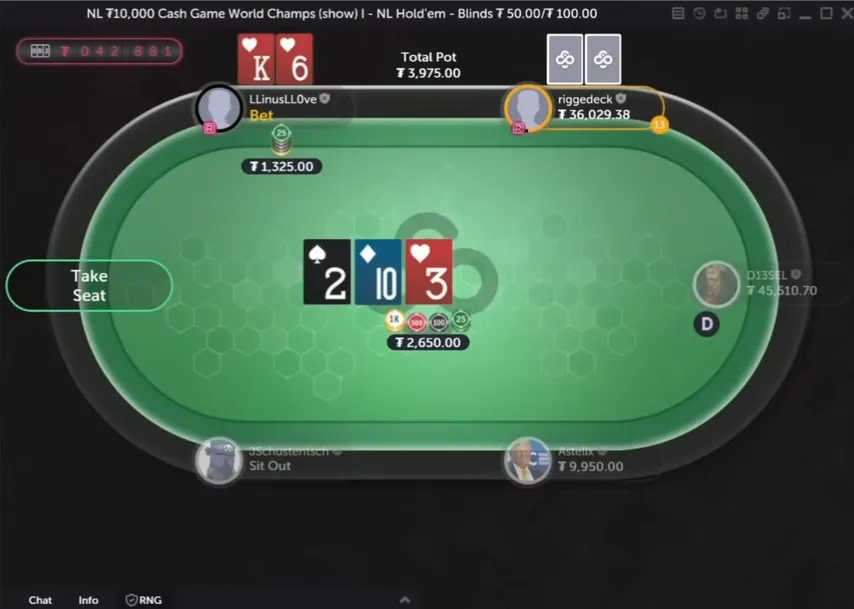
He bets 50% of the pot, which is probably on the lower end of the size spectrum. Anything 50% or higher would likely be GTO-approved here because on these types of flops your overpair advantage is extremely high, and these hands prefer getting a lot of money in right away on the flop.
Betting 50% pot is totally fine for solvers here; 75% would be an option even more commonly used on this board type. If we let a solver use only a 50% pot sizing, we can see that King-six of hearts would still bet most of the time here. When we look at population tendencies on this flop type facing a bet, we don't see significant deviations in terms of frequency—meaning populations don't massively overfold or underfold against this bet size.

Therefore, there isn't much interesting deviation to analyze on this flop; we'll just get back to the action.
The bet gets called. The turn brings a jack, and now we haven't improved our hand directly. However, our range may have improved slightly because overpairs like Ace-Queen, Ace-King, King-Queen now pick up straight draws.
We still retain strong holdings like Jacks, Queens, Kings, and Aces—all of which haven't decreased much in equity or EV compared to before the turn card came out. This isn't a bad turn card for our range overall; however, for in-position hands like pocket nines through pocket fours, this turn card isn't favorable.
Let's see if Linus decides to barrel despite not improving his hand directly here.
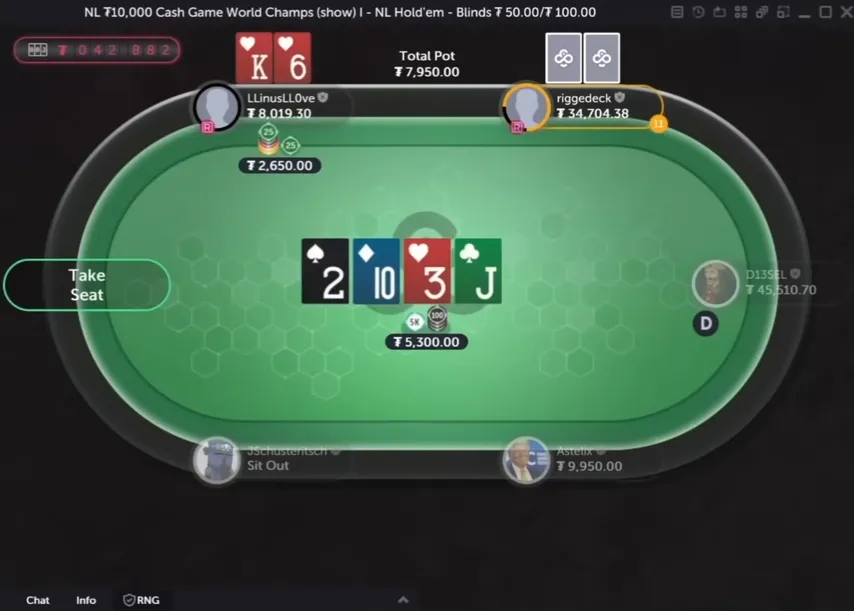
He does another 50% pot bet on this turn card. Solvers don't generally prefer barreling pure King-highs on this type of turn card; they favor barrels with equity—such as straight draws coming from King-Queen or Ace-Queen—or even Four-Five suited due to its open-ended straight draw potential.
But what about low stakes? Would this play work against average players on mid-stakes or lower? Data shows that average players at these stakes heavily overfold against turn barrels—especially when turn cards are overcards relative to the flop.

For example, when the turn card is a Jack following a ten-high flop like this one, we observe significant differences between how often an in-position player is supposed to fold according to GTO versus how often they actually fold in practice at these stakes.
And so, if we input this information into the solver and increase the in-position player's folding frequency by five percentage points—reflecting the average for the population—we can see that we can now barrel almost our entire range here. However, we still do not barrel King-six, King-four, and Six-suited. These loose King-X and Ace-X hands, which have no additional equity except for those pair outs, are still not good enough to barrel here, even if we expect our opponent to heavily overfold—five percentage points being a significant adjustment.
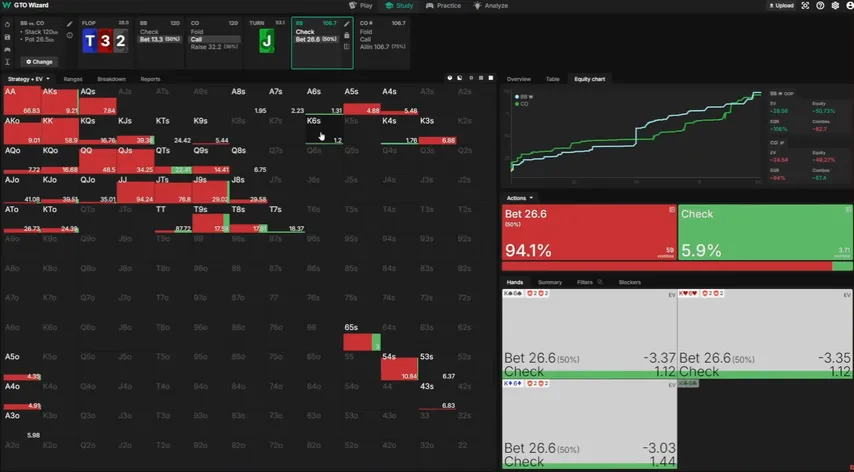
You still want to shy away from barreling just loose, garbage hands that do not have more than four outs, if at all. The bet does get called. Now, the river brings no improvement for his hand again. Of course, he now has two options: either check and give up or go ahead and bluff jam, which does look like an interesting option for sure. But let's see what he does. He does go for it.
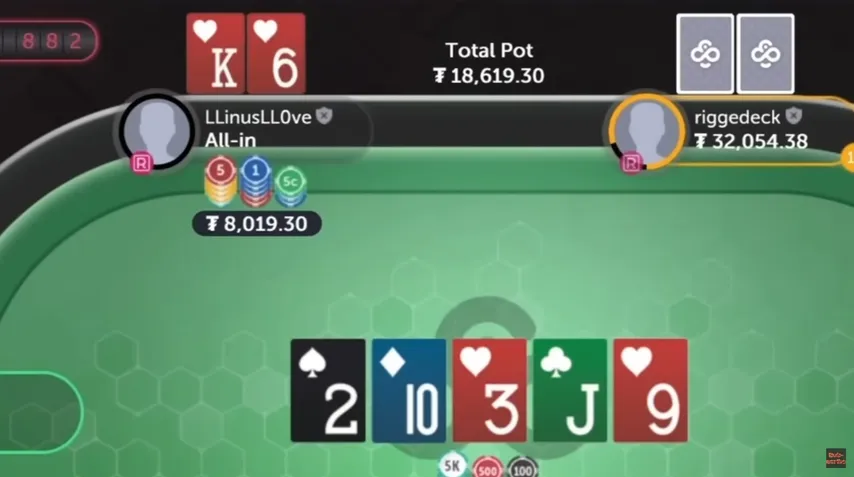
Since the solver wouldn't barrel King-six of hearts on the turn, it wouldn't be in the river range here anymore. However, if we lock the simulation to include at least 25% of barrels with King-six of hearts on the turn, we can examine whether it would be bluffing in the solver on the river. Here, we do see that the combo would be a pure bluff on the river, which is what Linus actually did. So, with exceptions to the turn barrel, his play is actually pretty GTO because when he does get to the river with this hand, he would be supposed to always bluff it.
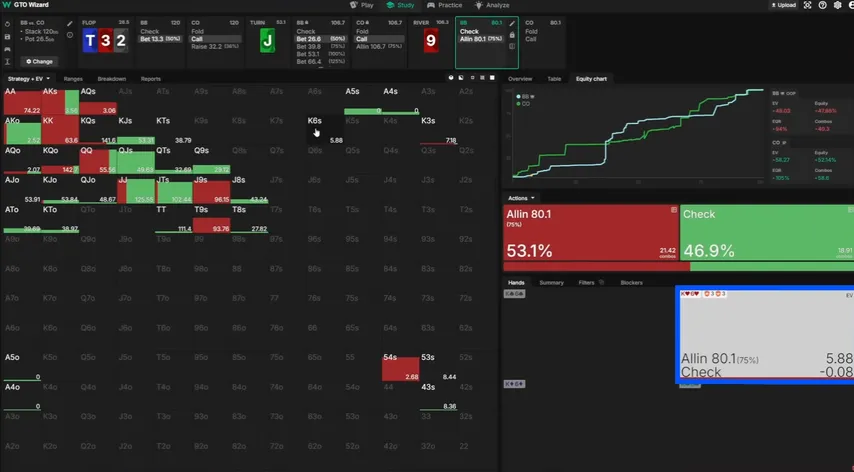
Would this work on low stakes? For that, we again look at the data, and here we do see that on the river, the average player on mid-stakes and lower does again heavily overfold against the barrel. However, since this number is an average across all boards after seeing a ten-high flop, we still want to use our own common sense and evaluate how likely it is to see overfolds on this specific runout.

To do this, we'll look at what the solver strategy is for in-position players when facing a jam and then decide how likely it is for an actual player on low stakes to play this strategy. Here, we see that the solver would have in-position players call about 55% of the time, and for those hands, pretty much everything that is an overpair and better would never fold. I have to say that in reality, we likely see more Aces and Kings being four-bet pre-flop, so these hands will likely not be as prevalent in this range on the river anymore. However, since Aces and Kings are both hands that would call all the time, and Ace-King suited is a hand that would fold most of the time, we can pretty much say that these balance each other out here.
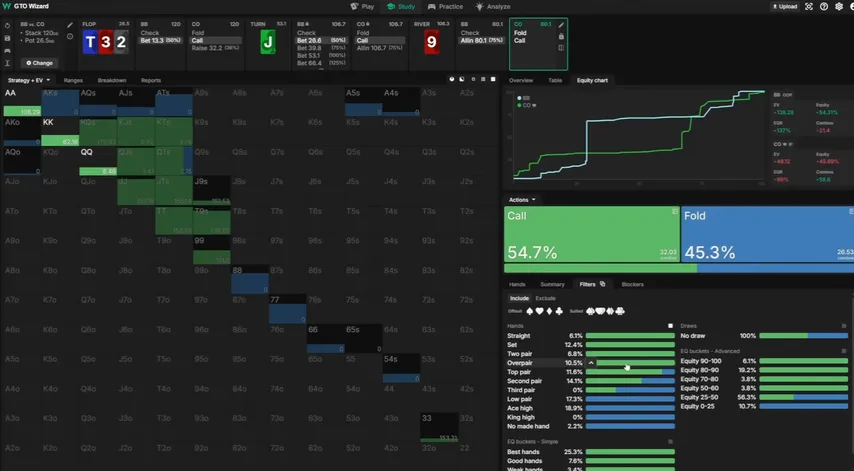
Then, we see that top pairs mostly call here, which I believe will be quite accurate on average. However, second pairs also call quite a lot—more than 60% of the time—which I think is a hand class that would likely fold more often in practice.
So, this is a hand that we can go ahead and node-lock to be folding more often. Let's just say, instead of calling King-10 suited every time and Queen-10 suited most of the time, both of these hands will just fold 75% here. Now the calling frequency already drops from about 55% to almost 48%—quite a big drop from only reducing the calling frequencies of two hands.
As a result, we can look at which hands we would now be able to bluff here.
Besides King-six suited, which would be a very profitable 16 big blind jam here, we see that all of these other bluffs—Ace-four suited, Ace-five suited, and also the offsuit combos—would all go ahead and bluff every single time. Ace-Queen offsuit, Ace-King offsuit, Ace-Queen suited, and Ace-King suited as well; all of these hands become very profitable jams here.
We can also see that everything that is Ace-high and worse would always go ahead and barrel—100% of bluffs with Ace-high and worse, and even some low pairs would go ahead and now bluff it off. Especially King-three suited, which just tells us how much we can actually bluff profitably here. And we also see how big the EV is here—so all of these bluffs are more than plus 11 big blinds in EV, which is an insane amount for any hand that is a bluff. We usually don't see that in equilibrium; not even close.
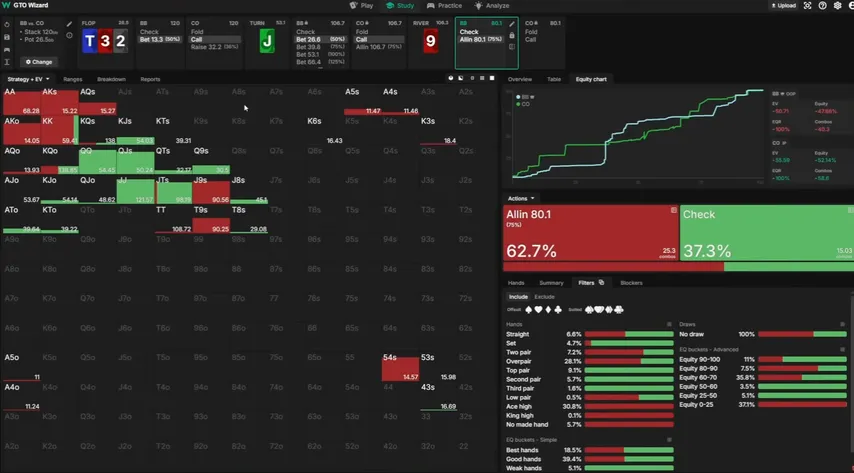
So, all of these bluffs would be around zero in GTO, but now, with only two hands that would be folding a little bit more often than they should, all of these hands become very, very profitable bluff jams here. This means that any bluff that would be a GTO bluff will also be profitable against the population, and on top of that, even much more so.
So, overall, what can be the summary of this play? Would this line work at low stakes? Well, kind of. Pre-flop and on the turn, we would not want to take this exact line against the average opponent. Three-betting King-six suited is not the best play against the population, but it's also not the worst thing.
On the turn, we can see that even against an opponent who heavily overfolds, barreling King-six—a pure King-high with no additional outs except for those four pair outs, which might not even be good if you're getting called—is still a losing play. However, you could make the point that barreling it on the turn is not that bad of a mistake if you then also follow through on the river. This is because the population's overfolding frequency is even higher when you get to the river.
So, if you can barrel it on the turn and then have a very profitable bluff on the river—evidenced by the population overfolding more than 10 percentage points on the river—then you can argue that barreling the turn is actually plus EV because you get to make another even more plus EV play on the river.
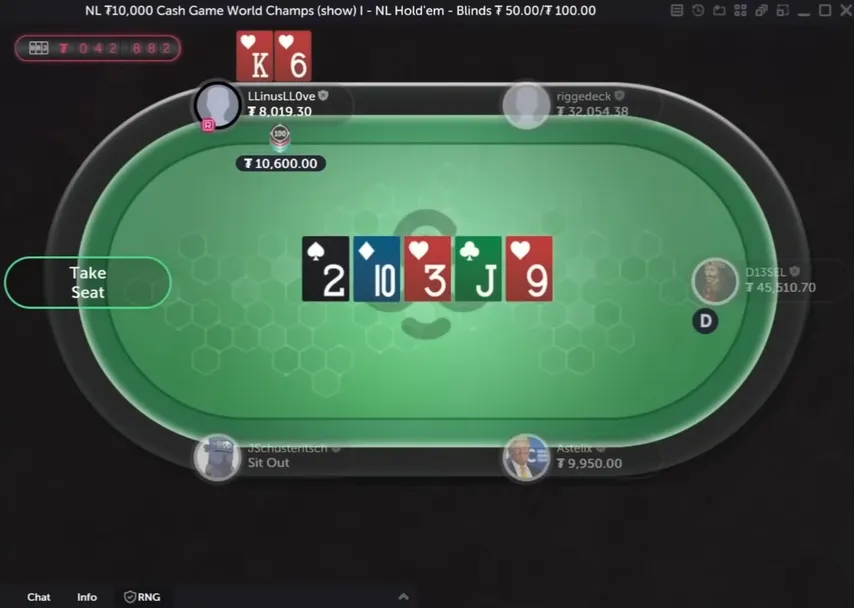
Of course, if you know player-specific tendencies and have information on your specific opponents, then all of this doesn't matter. Personal player-dependent info always overrules population tendencies. But if you have no idea or no reads about your opponent or don't know how they play this specific line, then this data is extremely valuable, and you will, on average, make better decisions if you have data on this.
- Increased first deposit bonus
- Increased rakeback and reloads
- Help with deposits and cashouts
- Access to private freerolls
- Round-the-clock support







